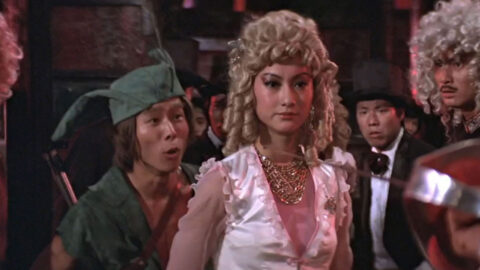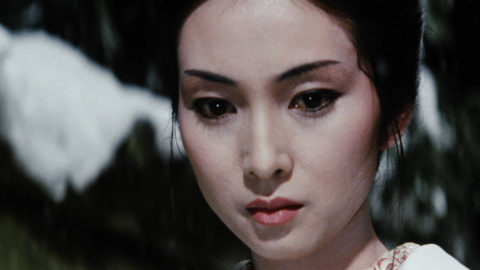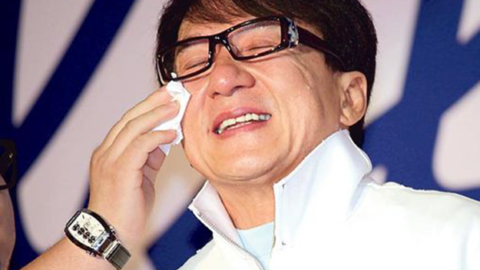Old Formats, New Streaming: DTV Trash-ter-pieces
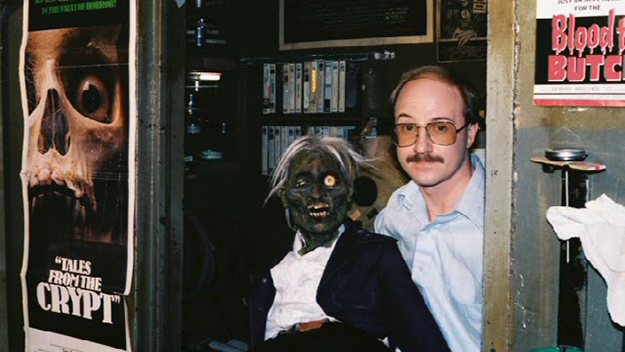
Mad Ron’s Prevues From Hell
One of the most exciting things about growing up during the VHS era was a trip to the local video store, which allowed you to take home not only your own (temporary) copy of the latest big-budget Hollywood blockbusters, but also, for more intrepid cinematic explorers, to dig out oddities which had only had a limited or local release, or more often which never saw the inside of a movie theater at all. Discovering a label like Vestron, Wizard, Magnum, Media Home Entertainment and others promised lowbrow thrills and the guarantee of a certain kind of consistency, if not quality, which turned dilettantes into fanatics and fanatics into collectors. These labels now have a vigorous afterlife on eBay and at VHS swap meets, but online streaming services are also slowly catching up, unearthing previously VHS-only titles, or making it easier to catch up on limited-release films which were created specifically for the home video market. Of course, an enormous amount of entertainment product these days is created specifically for these services, but if you jump back a decade or more, you can still dig up some titles which were made just for viewing at home.
In those early days of VHS, the trailer compilation tape was often a godsend, particularly for horror film fans. Many of the most sought-after titles had yet to be released on tape, or were only available in expensive (and sometimes format-incompatible) foreign editions. One of the absolute classicks among compilations, and a much sought-after collectible on VHS, is the 1987 trash masterpiece Mad Ron’s Prevues from Hell. Produced by James Murray, Jr. and Ron Roccia, and written by Roccia, Murray, director Jim Monaco and host Nick Pawlow, the 90-minute compilation features trailers for some of the bloodiest and most extreme horror and exploitation movies ever made, bookended and occasionally interrupted by Philadelphia-based ventriloquist Pawlow and his foul-mouthed zombie dummy, Happy Goldsplatt. Luckily for nostalgia-minded viewers, and for anyone with an appreciation for low humor and gore, Mad Ron’s is available for streaming on Netflix, and will instantly transport fans back to the golden era of both splatter movies and analog home video.
Shot in and around the Lansdowne Theater in southeastern Pennsylvania outside Philadelphia, the film begins with a bunch of zombies—in surprisingly good makeup, given its low budget—invading the lobby and cinema in anticipation of a screening. Cut to the projection booth, where Mad Ron (producer Roccia), a drooling, chained-up lunatic, prepares trailers for the enjoyment of the undead. In the meantime, hosts Nick and Happy hang out, tell jokes, occasionally comment on the trailers, and even give a nostalgic shout-out to the late, lamented horror magazine Fangoria. The trailers themselves are a magnificent collection, showcasing both well-known genre classics and one-off oddities which still haven’t achieved much of a following.
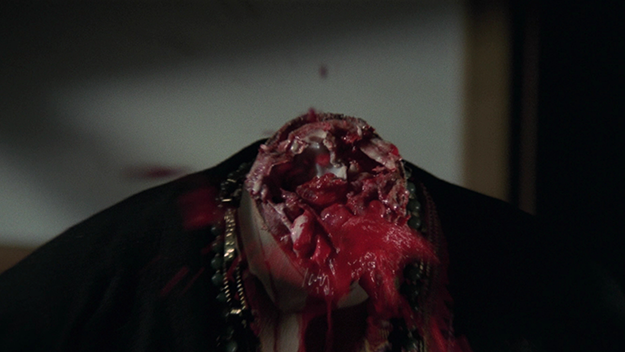
Carnage
Beginning with hippie splatterfest I Drink Your Blood, the compilation moves on to now-respected genre tentpoles like the (virtually bloodless) Texas Chain Saw Massacre, Last House on the Left, Night of the Living Dead, and Dario Argento’s Deep Red. More European imports are covered, include Torso, The Blood-Spattered Bride and Mario Bava’s House of Exorcism (aka Lisa and the Devil) and Carnage (aka Bay of Blood), plus Canadian shockers like Black Christmas and Cannibal Girls. Super-indies like Deranged, Three on a Meathook, Blood and Lace and Andy Milligan’s The Ghastly Ones are featured, plus gross-out flicks like Ilsa, She-Wolf of the S.S., Italian cannibal film The Man from Deep River, and Night of the Bloody Apes. Mondo movies get a single entry with Africa: Blood and Guts, and British anthology horrors are represented by Tales from the Crypt and Vault of Horror. Horror comedy even gets a couple of titles like The Corpse Grinders and The Undertaker and His Pals. A few lesser-known films like 1973’s devil-worshipper film Love Me Deadly and 1969’s Night of Bloody Horror show up, as well.
With no duds to be found—at least, in terms of the trailers, if not the films themselves—and minimal interruptions from the sometimes patience-trying Nick and Happy, Mad Ron’s is perfect party viewing, and the entire feature ends with a funny skit where Happy exacts very bloody retribution on a video pirate he’s caught copying their tape. As groan-inducing as the ventriloquist skits may be at times, they add a classic TV horror host element to what otherwise would have been just a succession of movie trailers, a feeling that binging movie trailers on YouTube these days can’t begin to capture.
Around the same time that Mad Ron‘s was making its way through local video rental stores across America, the Japanese video industry was creating its very own cash cow in the form of movies made directly for the home market, bypassing theatrical exhibition altogether. Like Mad Ron’s, these titles were made directly for home video but were real narrative features instead of just gag shows, and many different companies got in on the act, quite a lot of them very small and no longer in existence. The biggest by far, however, was major studio Toei, who created an entire “V-cinema” division to produce and distribute their made-for-video titles, also helping to start the careers of many filmmakers still working today.
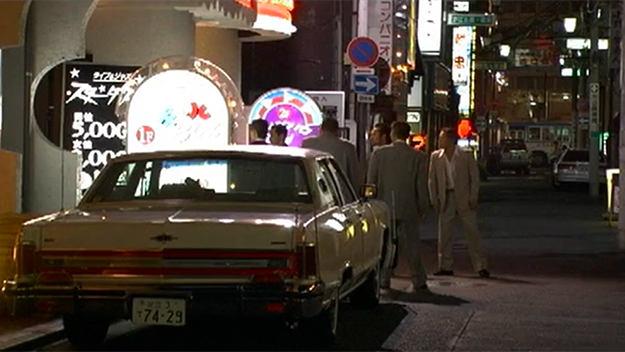
Yakuza Don
While the heyday of V-cinema’s popularity was the 1990’s, newer companies came along in the 2000’s to take up the baton, filling stores with rental DVDs featuring action-packed stories about yakuza. These were made primarily for male viewers and featured a rotating line-up of tough guy stars, though mostly shot on digital video instead of film as in the 90s. If you’re curious about one iteration of the genre that produced filmmakers like Takashi Miike, Kiyoshi Kurosawa and Shinji Aoyama, Amazon Prime Video has several titles in its catalog to check out.
For American audiences, the best-known V-cinema star is probably Show Aikawa, who’s appeared in multiple films from Kurosawa and Miike, most notably alongside fellow V-cinema king Riki Takeuchi in Miike’s Dead or Alive trilogy. But Aikawa’s V-cinema credits number far into the hundreds, and 2006’s Yakuza Don, available on Amazon, is the first in a series starring the popular actor as a hit man. Directed by DTV stalwart Hiroyuki Tsuji, the film is unpersuasively set in 1968 Tokyo, though lacking almost entirely in period detail. Aikawa and his partner make a hit on an enemy boss without permission, and Aikawa takes a bullet in his leg when the partner decides to give him an easy way out of jail; the partner instead takes the rap. Aikawa recovers in the hospital, leading to multiple flashbacks about his entry into the gang, then relocates to Osaka where he only just begins to get into a major dispute with a local gang member before the film ends in a cliffhanger.
Yakuza Don is a mediocre DTV entry, but has its strengths, primarily in its cast, which includes cameos from familiar V-cinema actors like Hitoshi Ozawa, Susumu Terajima and Shun Sugata (all of them regular bad guys, cast against type here as cops), and old-time genre movie stars Tamio Kawachi and Goro Ibuki as gang bosses. Kawachi’s presence hearkens viewers back to the golden age of Nikkatsu Action filmmaking, having starred in titles like The Warped Ones (1960) and Tokyo Drifter (1966), and Sugata is a familiar character actor from Kill Bill: Vol. 2 and Scorsese’s Silence, among many others. Although it doesn’t make the movie itself any better, seeing veteran pros like this pop up so often in V-cinema titles is like catching an old-time Hollywood star making a cameo appearance in a TV-movie or a commercial: it elevates the new enterprise simply by their association.
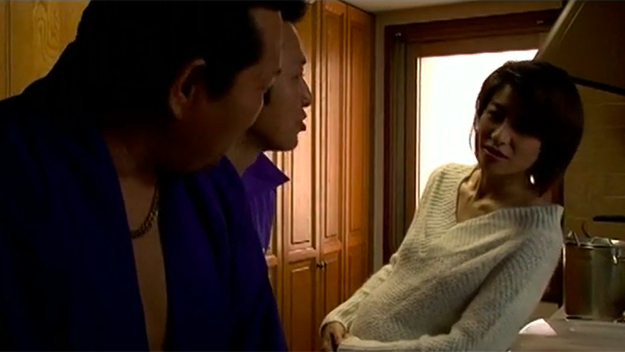
A Sniper’s Woman
Two other films directed by Tsuji and available on Amazon Video are centered around female characters in the underworld, a rarity for a genre which usually casts women in thankless roles as eye candy bar girls or supportive wives. A Sniper’s Woman (2008) is the lesser of the two, and features Hanako Nanjo in ostensively the lead role as a woman who falls in love with, and then marries a gangster, but the film turns out to be more of a showcase for Ozawa again, as an ambitious yakuza member who works his way up the gangster food chain. It’s nothing but stereotypes and lame melodrama. The better of the two by far is 2007’s Lady Yakuza, based on the supposed real-life story of Shoko Tendo, the daughter of a yakuza boss who wound up in a downward spiral of drug addiction, bad boyfriends and violence before becoming a writer and dramatizing her own story. Tendo appears as herself in wraparound segments where she’s getting a full-back tattoo from a tattoo artist who listens sympathetically to her story, played by the great Toei actor Hiroki Matsukata, who passed away late in January.
Most of Lady Yakuza is told via flashbacks to Tendo’s high school days, as she falls in with a bad crowd, begins huffing paint thinner before moving on to harder drugs, and spends her nights at the receiving end of sexual violence, usually from her abusive yakuza boyfriend (Ozawa again). Despite its budget limitations and melodramatic ending, which is another cliffhanger leading into the concluding episode of the story, the movie is an impressive effort, never shying away from the awfulness of the drug-riddled yakuza lifestyle and the predatory personalities who inhabit it.
Hitoshi Ozawa’s gravelly-voiced talents also contribute to the success of 2004’s Bullet Explosion, directed by Atsushi Yamamura and co-starring Ozawa’s real-life younger brother Kazuyoshi. The older Ozawa plays an unsuccessful gambler who’s rescued during a fight by a former buddy and gang partner. Some more dodgy flashbacks reveal that Ozawa was on his way to becoming a big-time gangster after successfully gunning down a rival when a surprise phone call from his wife that he was about to become a father made him decide to leave “the life” for good, letting his partner (Ozawa the younger) take not only the rap, but also the credit for the hit. Flash-forward several years and Ozawa gets dragged back into the yakuza world due to financial circumstances (his child had passed away in the meantime), putting him in conflict with his made brother as well as the rest of the gang hierarchy.
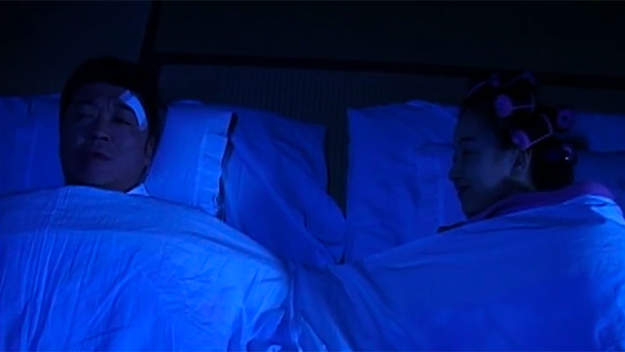
Bullet Explosion
Bullet Explosion is more of a dark character study along the lines of director Rokuro Mochizuki’s earlier V-cinema films (Onibi, Another Lonely Hitman). Ozawa is terrific in the central role, and the film makes good use of its Osaka locations, including the maybe-not-coincidental placement of a Last Samurai billboard on the street. Climaxing with a hostage drama that doesn’t end well for its antihero protagonist, Bullet Explosion is a good example of what innovative craftsmen can accomplish with limited means.
Echoing a more traditional style of yakuza film, made popular by Ken Takakura and Koji Tsuruta in the 1950s and featuring honorable men torn between duty and personal desire, Yakuza Legacy (2008) is the concluding episode of a pair of films starring Hakuryu, best known as the villain in Takeshi Kitano’s Violent Cop, as an upright gangster trying to negotiate the machinations of unscrupulous gang bosses. Directed by Masatsugu Takase and featuring a cameo from Sonny Chiba, who appears in a bigger role in the first episode (not available on Amazon Video, alas), the film is the prosaic adaptation of a novel that consists mainly of men in rooms having conversations about gang allegiances and turf wars. While someone like Kinji Fukasaku could take this sort of scenario and create tension and excitement, it’s beyond Takase and his writers, despite the welcome presence of old-time actors like Frankie Sakai and Tatsuo Umemiya in cameo roles.
Worth a watch simply for its oddball qualities is Yakuza War: Chalice of Shura (2003, noted as 2005 on Amazon), starring Miike and Kitano favorite Susumu Terajima as an extremely atypical gang boss in northern Japan in the mid-80’s. An odd duck in the yakuza world, Terajima’s character piques the interest of another, more powerful gang boss who takes the nonconformist under his wing for protection. An over-intricate story of alliances and betrayals follows, but Terajima’s performance, full of ticks and shrugs, gives the film some added distinction. Director Shigeru Ishihara is notable for having had a longer career than many other DTV directors of the 2000’s, one which started as a cinematographer for TV series and movies in the 1970’s (mostly on the extremely popular Hissatsu! series, plus a couple of features for Fukasaku), before moving on to directing in the 90’s.
While Terajima is probably best-known as the gangster who’s hung by hooks and tortured with hot oil in Miike’s violent, mid-career classic Ichi the Killer (2001), viewers at home can now catch up on several of the director’s earliest films, all made for the V-cinema market. Miike’s extremely entertaining first two features, 1991’s Eyecatch Junction, an action comedy about lady police officers who use rhythmic gymnastics to catch crooks, and the same year’s Lady Hunter: Prelude to Murder, a more serious action film about a former mercenary who becomes a hitwoman for the yakuza, are both available with English subtitles on YouTube, as well as 1994’s Shinjuku Outlaw, starring Hakuryu and notable as the first film of Miike’s ever to be screened theatrically in Japan, though it was made initially for the home video market. Once hard-to-find titles due to the bankruptcy of their original distribution companies, due to the efforts of intrepid video pirates and subtitlers, they’re now happily available for all fans of oddball cinema to watch in the comfort of their own homes.
Playlist
Mad Ron’s Prevues from Hell
Yakuza Don
A Sniper’s Woman
Lady Yakuza
Bullet Explosion
Yakuza Legacy
Yakuza War: Chalice of Shura
Eyecatch Junction
Lady Hunter: Prelude to Murder
Shinjuku Outlaw
Marc Walkow is a writer and film programmer living in New York. Formerly a director of the New York Asian Film Festival, he has also produced DVDs and Blu-rays for Criterion and Arrow Video.



